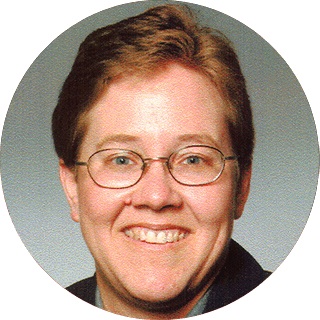Commentary on Revelation 21:10, 22—22:5
Reading Revelation well is a significant challenge for us, primarily because of its genre. I’ll define “genre” this way: a category of artistic composition that shares characteristics like form, style, subject, et cetera. For example, in a murder mystery novel we expect to encounter a fictional account of someone dying by unnatural causes, puzzling and unsettling circumstances and characters, and finally the answer to “whodunit.” Readers who dislike death or being unsettled will prefer a different genre of novel. We make use of genre whenever we choose reading material, movies, music, TV shows, which museums to visit, et cetera.
Our struggle with Revelation is that we don’t have a genre like apocalyptic literature, so we don’t know what expectations to bring to our reading. Consequently, we try to “fit” it into a genre we understand. Thus, when our scientific culture, wherein we equate facts and truth, meets our claim that the Bible is true, we find many interpreters putting Revelation into a “facts = truth” perspective. They claim Revelation predicts actual historical events, but does so in code language (hence the odd scenes and images throughout). Thus, interpretation amounts to “breaking the code” of the book.
Reading Revelation differently
John, Revelation’s author, wasn’t part of a world guided by the scientific method, however, so he and his audience approached truth differently. We might describe their understanding of truth as that which makes sense out of life. From this perspective, Jesus’ parables are true, though they likely never actually happened. Similarly, Isaiah’s great poetry about “the wolf lying down with the lamb” is true, even though wolves and lambs likely won’t literally lie down together even if peace among nations comes about.
I am persuaded, therefore, that reading Revelation from a 21st-century science-type perspective and its language as a code is inadequate. Instead, we are served best by reading as the first-century author and audience might have done. John introduces his great work this way: A “revelation of Jesus Christ, which God gave him to show his servants what must soon take place” (1:1).
Two points are key for appreciating what John has given us. First, the Greek word apokalypsis (translated “revelation”) indicates an “unveiling” so that we see something anew. Second, the phrase “take place soon” is apocalyptic language indicating the fulfillment of God’s purposes for creation. While we tend to read “soon” in terms of chronology (in other words, coming days or weeks), first-century folks would have heard it as indicating certainty.1 So John’s work is an unveiling of what God will certainly fulfill for creation.
How does one present such a revelation? John might have said, “Ultimately, God’s peace and justice prevail.” Words like that, however true they may be, are less likely to enable John’s audience to “see” what he “sees” than are powerful symbols and images that spark our imaginations. So John writes of God’s majestic throne, a little lamb standing though it had been slaughtered (the primary image for the resurrected Jesus), a woman clothed with the sun protected from a red dragon who was cast out of heaven, an ultimate battle that isn’t a battle at all, and the descent of “Jerusalem” as a final image of the renewal God promises for creation (21:10).
Revelation 21:22–27
Our text (Revelation 21:22–22:5) is part of the description of this new Jerusalem. The prominent symbol in the first paragraph of our text (21:22–27) is light: The city doesn’t need sun or moon because God is ever present (verse 22), God’s glory is its light, and the Lamb is its lamp (verse 23). Living as a citizen of this new Jerusalem means living as the Lamb taught and showed us (in other words, revealed by “shining his lamp” on it). As a result, there is “no night there” (verse 25), which means, according to our text, that no deceptions and no false gods exist in the city (verse 27).
If we consider how the worship of something like wealth or power causes people to plot and scheme, perhaps manipulate and steal, we can grasp the “revelation” of the link between false gods, lies, and darkness; what shining a light on such practices does to them; and how living apart from them (as the Lamb did and thus revealed) brings us into newness. Doing so would be like living in a new Jerusalem.
Revelation 22:1–5
No wonder, then, that the prominent symbol in the second paragraph of our text is the Tree of Life. It straddles the river of the water of life that flows through the city, it has fruit all year round so people aren’t hungry, and its leaves are “for the healing of the nations” (verses 1–2).
In the creation story, humanity was barred from the Tree of Life (Genesis 3:20–24). But in God’s renewed creation (in other words, the new Jerusalem), inaugurated by Jesus the resurrected Lamb, we have restored access to it. That is, God’s intention for us and all creation is that we share in God’s gift of life, not only when we die, but also when we live in the light of God’s revelation via Jesus. Which means, as John is revealing, living apart from lies and false gods or anything “accursed” (verse 3), as Jesus did.
The result, as we’re told again, is that there is no night there. Instead, we are present with God, who is our light (verse 5)—so present that we can see God’s face (verse 4), as Moses wasn’t allowed to do (Exodus 33:19–23). In the new Jerusalem we have such closeness with God that God’s face is now available to us.
God promised renewal and life to us, and the lamp of the resurrected Lamb/Christ shines so that we see these gifts: a powerful “revelation” from John.
Notes
- Scholars tell us that people in ancient peasant cultures, where clocks and calendars didn’t exist, thought about time differently than we do. Their focus on surviving today, tomorrow, and the next day meant they weren’t future-oriented as we tend to be. Thus, “soon” was less about the future and more about confidence. To say something “will happen soon” was to say that it will happen.


May 25, 2025